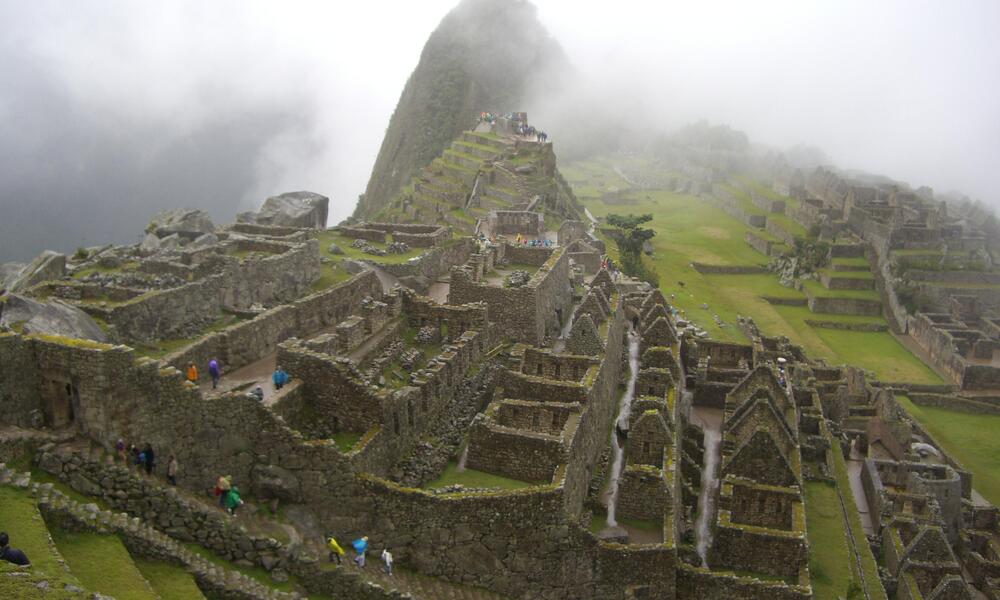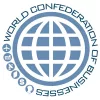
Machu Picchu Facts
Machu Picchu, often referred to as the “Lost City of the Incas,” is a majestic ancient citadel nestled high in the Peruvian Andes. This UNESCO World Heritage Site has captivated the hearts and minds of explorers, archaeologists, and tourists alike. In this article, we will delve into the intriguing history, mysteries, and cultural significance of Machu Picchu.
The Discovery of Machu Picchu
The existence of Machu Picchu remained unknown to the outside world until its discovery in 1911 by the American explorer, Hiram Bingham. While searching for Vilcabamba, the last Incan capital, Bingham stumbled upon this hidden gem. Although locals were aware of its presence, it remained largely forgotten until its rediscovery.The Ancient City of Machu Picchu
Machu Picchu was built during the 15th century by the Inca civilization under the rule of Emperor Pachacuti. This magnificent city, constructed using intricate stone masonry techniques, served as a sacred and administrative center. It is believed to have housed approximately 750 inhabitants, mainly priests, nobles, and their attendants.The Mysteries of Machu Picchu
Machu Picchu continues to intrigue scholars and visitors with its enigmatic nature. The purpose of its construction, the reason behind its abandonment, and its precise function within the Inca Empire remain subjects of debate and speculation. Some theories suggest that it served as a spiritual retreat or a royal estate, while others propose it was a center for astronomical observations.The Construction and Architecture of Machu Picchu
The construction of Machu Picchu showcases the remarkable engineering skills of the Incas. The site is divided into two main sectors – the agricultural zone and the urban area. The use of precisely carved stones, without the aid of mortar, is a testament to the Incan craftsmanship. The architecture also demonstrates expert knowledge of water management systems and the integration of the city with the surrounding landscape.The Importance of Machu Picchu in Inca Civilization
Machu Picchu holds great significance in Inca civilization as it represents an extraordinary example of urban planning and architectural achievement. Its strategic location atop a mountain ridge provided natural defenses and allowed the Incas to control the Sacred Valley. The city also served as a hub for religious and ceremonial activities, demonstrating the Incas’ deep connection to their spiritual beliefs.The Natural Beauty Surrounding Machu Picchu
Beyond its historical and cultural significance, Machu Picchu is surrounded by breathtaking natural beauty. The site is nestled amidst lush mountains, cloud forests, and the rushing Urubamba River. The awe-inspiring scenery adds an ethereal touch to the ancient ruins and enhances the overall experience for visitors.The Cultural Significance of Machu Picchu Today
Machu Picchu continues to hold immense cultural significance for the descendants of the Inca civilization. It is considered a sacred place and an important symbol of their heritage. The site attracts millions of visitors each year, who come to appreciate its rich history and immerse themselves in the spiritual energy that emanates from its ancient walls.Preservation Efforts and Challenges
Preserving Machu Picchu is an ongoing challenge due to its remote location, environmental factors, and the impact of tourism. Efforts have been made to implement sustainable practices, limit visitor numbers, and conduct restoration work to ensure the site’s longevity. However, striking a balance between access and preservation remains a delicate task.Visiting Machu Picchu: Tips and Recommendations
- Plan your visit in advance and book tickets early, especially during peak seasons.
- Consider taking the train from Cusco to Aguas Calientes, the town at the base of Machu Picchu.
- Acclimate to the high altitude of the region before embarking on your journey.
- Wear comfortable shoes and clothing suitable for hiking and changing weather conditions.
- Engage the services of a knowledgeable guide to enhance your understanding of the site.
- Respect the rules and regulations in place to protect the integrity of the site.
Conclusion
Machu Picchu stands as a testament to the ingenuity and cultural legacy of the Inca civilization. Its allure lies not only in its architectural marvels but also in the mysteries that continue to surround it. A visit to Machu Picchu is an unforgettable experience that transports you back in time, immersing you in the enchanting world of the Incas.Frequently Asked Questions
1. When was Machu Picchu discovered?
Machu Picchu was discovered in 1911 by Hiram Bingham, an American explorer.2. How was Machu Picchu built?
Machu Picchu was constructed using intricate stone masonry techniques without the use of mortar. The stones were precisely carved and fitted together.3. What is the significance of Machu Picchu in Inca civilization?
Machu Picchu held great religious, ceremonial, and administrative significance within the Inca Empire. It served as a sacred center and showcased the advanced urban planning and architectural skills of the Incas.4. How can I visit Machu Picchu?
To visit Machu Picchu, you can take a train from Cusco to Aguas Calientes, the town at the base of the site. From there, you can either hike or take a bus up to the ruins. It is advisable to book tickets in advance and engage the services of a knowledgeable guide.
Top Tours in Peru 2023
- Tour in Peru 5 days visit: Cusco, Machu Picchu, Sacred Valley and Rainbow Mountain
- Tour in Peru 5 days visit: Cusco, Machu Picchu, Sacred Valley and Humantay Lagoon
- Tour in Peru 9 days: Lima, Paracas, Nazca, Cusco, Valley, Machu Picchu, Lake Titicaca
- Tour in Peru 10 days visit: Lima, Cusco, Sacred Valley Machupicchu, Piura, Máncora
- Tour in Peru 15 days: Lima, Cusco, Valley, Machu Picchu, Lake Titicaca – Puno, Colca Canyon – Arequipa, Lima, Amazon River – Iquitos
- Tour in Peru 15 days: Lima, Paracas – Nazca, Colca Canyon – Arequipa, Lake Titicaca – Puno, Cusco – Sacred Valley, Machu Picchu, Lima
Tour from 1 to 30 days in Peru includes hotel, transportation, income and more
- Tour in Peru 1 day Machu Picchu in one day with the Train Company “Inca Rail”
- Tour in Peru 1 day Machu Picchu in one day with the Train Company “Peru Rail”
- Tour in Peru 2 days Machu Picchu and Sacred Valley
- Tour in Peru 2 days Machupicchu and Huaynapicchu
- Tour in Peru 3 days and 2 nights visit: Cusco, Machu Picchu
- Tour in Peru 4 days Cusco, Machu Picchu, Valley
- Tour in Peru 4 days with 1 night in Machu Picchu
- Tour in Peru 5 days visit: Cusco, Machu Picchu, Sacred Valley, Maras Moray
- Tour in Peru 5 days visit: Cusco, Machu Picchu, Sacred Valley and Rainbow Mountain
- Tour in Peru 5 days visit: Cusco, Machu Picchu, Sacred Valley and Humantay Lagoon
- Tour in Peru 5 days visit: Lima, Cusco, Machu Picchu, Sacred Valley
- Tour in Peru 6 days visit: Lima, Cusco, Machu Picchu, Sacred Valley, Lake Titicaca
- Tour in Peru 7 days: Lima, Arequipa, Colca Canyon, Cusco, Sacred Valley, Machu Picchu
- Tour in Peru 7 days: Lima, Cusco, Sacred Valley, Machu Picchu, Nazca, Paracas, Ballestas
- Tour in Peru 7 days: Lima, Valley, Machu Picchu, Puno, Lake Titicaca, Uros
- Tour in Peru 8 days visit: Lima, Paracas, Nazca, Cusco, Valley, Machu Picchu, Lake Titicaca
- Tour in Peru 9 days: Lima, Paracas, Nazca, Cusco, Valley, Machu Picchu, Lake Titicaca
- Tour in Peru 10 days visit: Lima, Cusco, Sacred Valley Machupicchu, Piura, Máncora
- Tour in Peru 11 days visit: Lima, Machu Picchu, Lake Titicaca, Puno, Colca Canyon, Arequipa
- Tour in Peru 11 days visit: Lima, Nazca, Machupicchu, Cusco, Puno, Lake Titicaca
- Tour in Peru 15 days: Lima, Cusco, Valley, Machu Picchu, Lake Titicaca – Puno, Colca Canyon – Arequipa, Lima, Amazon River – Iquitos
- Tour in Peru 15 days: Lima, Paracas – Nazca, Colca Canyon – Arequipa, Lake Titicaca – Puno, Cusco – Sacred Valley, Machupicchu, Lima
- Tour in Peru 20 days: Lima, Cruise on the Amazon River – Iquitos, Lima, Huacachina, Nazca Lines, Ballestas – Ica, Colca Canyon – Arequipa, Cusco, Sacred, Machu Picchu
- Tour in Peru 22 days: Lima, Señor de Sipán – Chiclayo, Chan Chan – Trujillo, Lima, Paracas, Nazca, Colca Canyon – Arequipa, Lake Titicaca Puno, Cusco, Valley, Machu Picchu
- Tour in Peru 25 days: Lima, Nazca, Machupicchu, Trujillo, Chiclayo, Lord of Sipan, Chavín De Huántar, Arequipa, Cusco
- Tour in Peru 30 days: Lima, Chan Chan Trujillo, Sipan Chiclayo, Kuelap Chachapoyas, Baños del Inca Cajamarca – Paracas, Nazca, Colca Arequipa, Titicaca, Cusco, Valle, Machu Picchu
Inca Trail to Machu Picchu
- Inca Trail 2 days to Machu Picchu
- Inca Trail 4 days to Machu Picchu
- Inca Trail 4 days to Machu Picchu”Lujo”
- Inca Trail to Choquequirao 4 days
- Inca Trail to Choquequirao 5 days
- Inca Trail through the Nevado Salkantay 4 days to Machu Picchu with Sky Camp
- Inca Trail through the Nevado Salkantay 5 days to Machu Picchu with Sky Camp
testimony of our passengers
Book your tour or ask your questions
| E-mail: info@machupicchu.com.pe | MOVIL: +51-977777777 |
| E-mail: mapitravel@hotmail.com | MOVIL: +51-984630919 |
| E-mail: machupichutravel@gmail.com | MOVIL: +51-984654111 |









